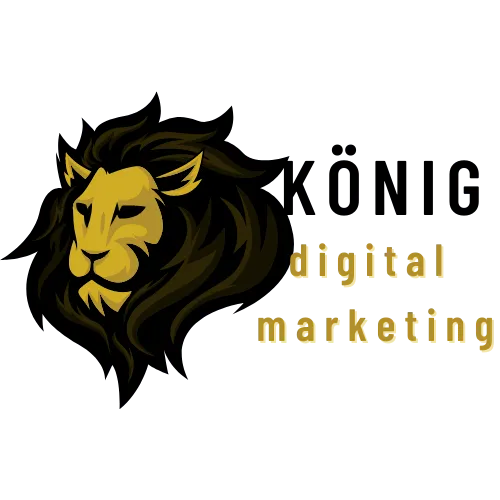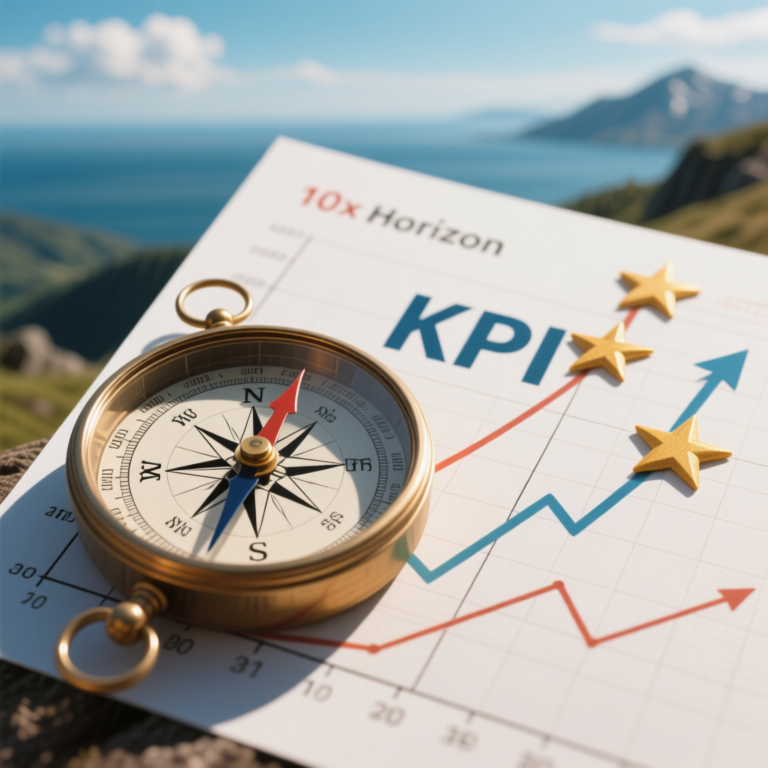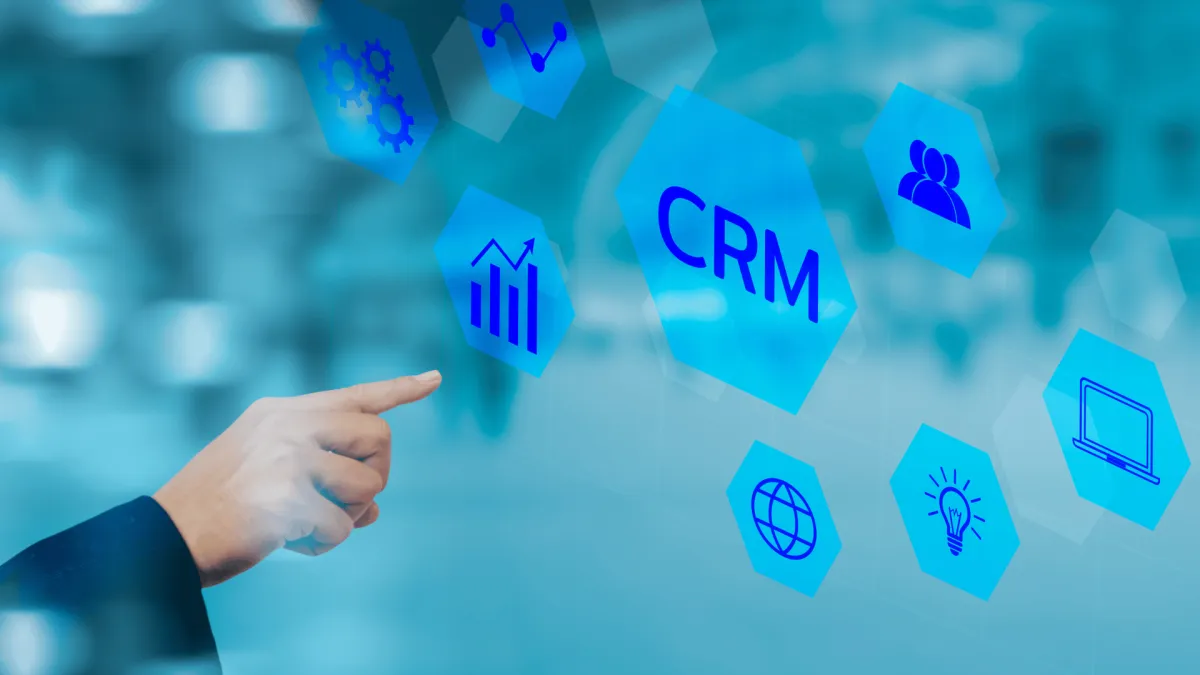

GTM Engineering, Marketing Automation & AI
By investing in marketing and automation software, you can streamline your customer acquisition process, nurture leads, and unlock hidden revenue through database re-activation. These tools can help you target the right customers, at the right time, with the right message, increasing the chances of converting them into paying customers.

Track Your 10x: KPIs for AI Scaling
Ever launched an AI initiative only to wonder months later if it's actually moving the needle, or just burning budget? In the rush to adopt AI for everything from lead generation to customer chats, many B2B founders overlook the critical step of tracking progress with the right KPIs for AI scaling. Without them, your path to that elusive 10x growth, as championed by Hardy and Sullivan in 10x Is Easier Than 2x, remains foggy at best. But get it right, and you unlock a dashboard that guides you from incremental tweaks to exponential leaps.
As a strategist, I've guided manufacturing and tech firms through this exact pivot, using AI lead generation for scaling to not just fill pipelines but to multiply revenue. Hardy and Sullivan remind us that true 10x comes from focusing on your unique abilities while shedding the 80% that bogs you down, a philosophy that perfectly aligns with smart AI metrics. In this editorial, we'll identify the measurement mishaps holding back your AI efforts, amplify why ignoring them is costly, and lay out a framework packed with KPIs for AI scaling. We'll tie in practical examples from AI lead generation and conversion, making this your go-to guide for measurable wins. Let's turn data into your superpower.
The Measurement Maze: Why KPIs for AI Scaling Are Elusive for B2B Leaders
Picture a B2B founder in medical manufacturing, excited about deploying AI for lead generation, only to find their team drowning in data without clear signals of success. The core challenge? A lack of tailored KPIs for AI scaling that go beyond vanity metrics like "leads generated" to capture true impact on growth. In 2025, with 80% of B2B sales teams adopting AI, many still track outdated indicators, missing how AI transforms processes like prospecting and nurturing.
This problem stems from treating AI as a plug-and-play tool rather than a strategic lever. Traditional lead generation metrics, such as volume alone, ignore AI's strengths in quality and speed. Hardy and Sullivan would label this "2x thinking," chasing minor gains like a 10% uptick in emails sent, instead of reimagining for 10x outcomes like halved sales cycles. For instance, without KPIs tracking AI conversion rates, you might celebrate more leads while conversions stall at 2-3%, per industry averages.
Dig deeper, and it's about alignment. AI lead generation for scaling excels at predictive scoring and personalization, yet without metrics like lead quality scores or engagement rates, founders misallocate resources. In our work, clients often start with broad dashboards, only to realize they need specifics like deal velocity to gauge AI's role in shortening cycles by 30-40%. This maze leaves teams guessing, especially in scaling phases where every dollar counts toward that from $3M to $10M jump.
The Domino Effect: Dangers of Flying Blind Without KPIs for AI Scaling
Ignoring this measurement gap isn't harmless, it's a silent saboteur that amplifies costs and risks in your AI journey. Let's unpack the urgency, starting with wasted investment. In 2025, companies pour billions into AI, yet without solid KPIs for AI scaling, 70% report underwhelming ROI, leading to abandoned tools and sunk costs averaging $500K for mid-sized firms. MediTech, from our earlier AI case study, nearly ditched their setup before KPIs revealed a 25% conversion lift.
Operationally, the fallout includes misaligned teams. Without metrics like sales productivity (up 10-30% with AI), reps chase shadows, boosting burnout and turnover by 20-25%. Hardy and Sullivan warn this erodes your four freedoms, time squandered on unmeasured experiments robs purpose and relationships. Financially, poor tracking means missed revenue, with AI adopters seeing 15-21% growth but laggards flatlining.
Competitively, you're vulnerable. Rivals using KPIs for AI scaling, like lead velocity rates above 15%, surge ahead with 30% better lead quality. In B2B, where cycles can drag 3-6 months, ignoring deal velocity leaves you exposed to 20% longer waits, per McKinsey. The risk? Your 10x vision fizzles into stagnation, as unchecked AI bloat turns innovation into expense. Act now, or watch resources evaporate in 2025's fast-paced market.
Navigating to 10x: A Framework with KPIs for AI Scaling
Enough alarm bells, let's chart your course. This four-step framework, drawn from successful AI implementations, equips you with KPIs for AI scaling to measure and multiply impact. Inspired by Hardy and Sullivan's 80/20 rule, it focuses on the vital metrics that drive exponential growth, integrating AI lead generation and conversion for immediate value.
Step 1: Baseline Your Current State with Core Input KPIs
Start by auditing your foundation. Track input KPIs like lead volume and cost per lead (CPL) to gauge AI's efficiency in generation.
Action: Calculate baseline CPL, aiming for reductions of 12-30% with AI. For AI lead generation, monitor lead attribution from sources like predictive analytics. Hardy and Sullivan's elimination: Prune underperforming channels, freeing resources for scaling. MediTech dropped CPL 25% by focusing here. Run a one-week audit to set your numbers.
Step 2: Monitor Process KPIs for AI Optimization
Shift to in-flight metrics. Key ones include lead response time (cut by 50% with AI) and engagement rates (29% higher opens for personalized content).
Practical: Use dashboards to track these, tying to AI conversion for contextual outreach. Embody your 10x self by filtering for high-engagement plays. In practice, aim for lead velocity rates over 15% to predict growth. Test by automating responses and measuring weekly shifts.
Step 3: Focus on Output KPIs for Tangible Wins
Now, outcomes. Prioritize conversion rates (25-50% uplift) and deal velocity (30% faster cycles).
Strategy: Link to AI lead generation for scaling, tracking how personalization boosts these. Sullivan's money freedoms emerge as revenue grows 15-21%. Set targets like 35% conversion increases, reviewing bi-weekly to iterate.
Step 4: Evaluate Impact KPIs for Long-Term Scaling
Cap with big-picture metrics like ROI, customer lifetime value (CLV), and sales productivity (10-30% gains).
Action: Calculate quarterly, using AI analytics for forecasts. Hardy and Sullivan's filter: Amplify what drives 10x, like 20% cost reductions. Build a custom scorecard, aligning with your unique abilities.
This iterative framework turns KPIs for AI scaling into your growth compass, blending Hardy and Sullivan's vision with data-driven action.
Charting Your Course: Empower Your AI Journey
We've explored the KPI maze, its perils, and a framework to master KPIs for AI scaling, all while weaving in AI lead generation and conversion. In 2025, with AI unlocking 30% productivity, this is your ticket to 10x.

Explore this AI case study from $3M to $10M revenue - read our recent article here...
Transform Your Business with Smart Marketing Automation Software...
Konig Digital, LLC
Address: 7903 Cole Ave, Takoma Park, MD 20912, United States
Email: [email protected]
Phone No: +1 (240) 202-2609
Hours:
Weekdays – 8 AM to 5 PM
Weekends- OFF

2025 All rights Reserved | Sitemap






